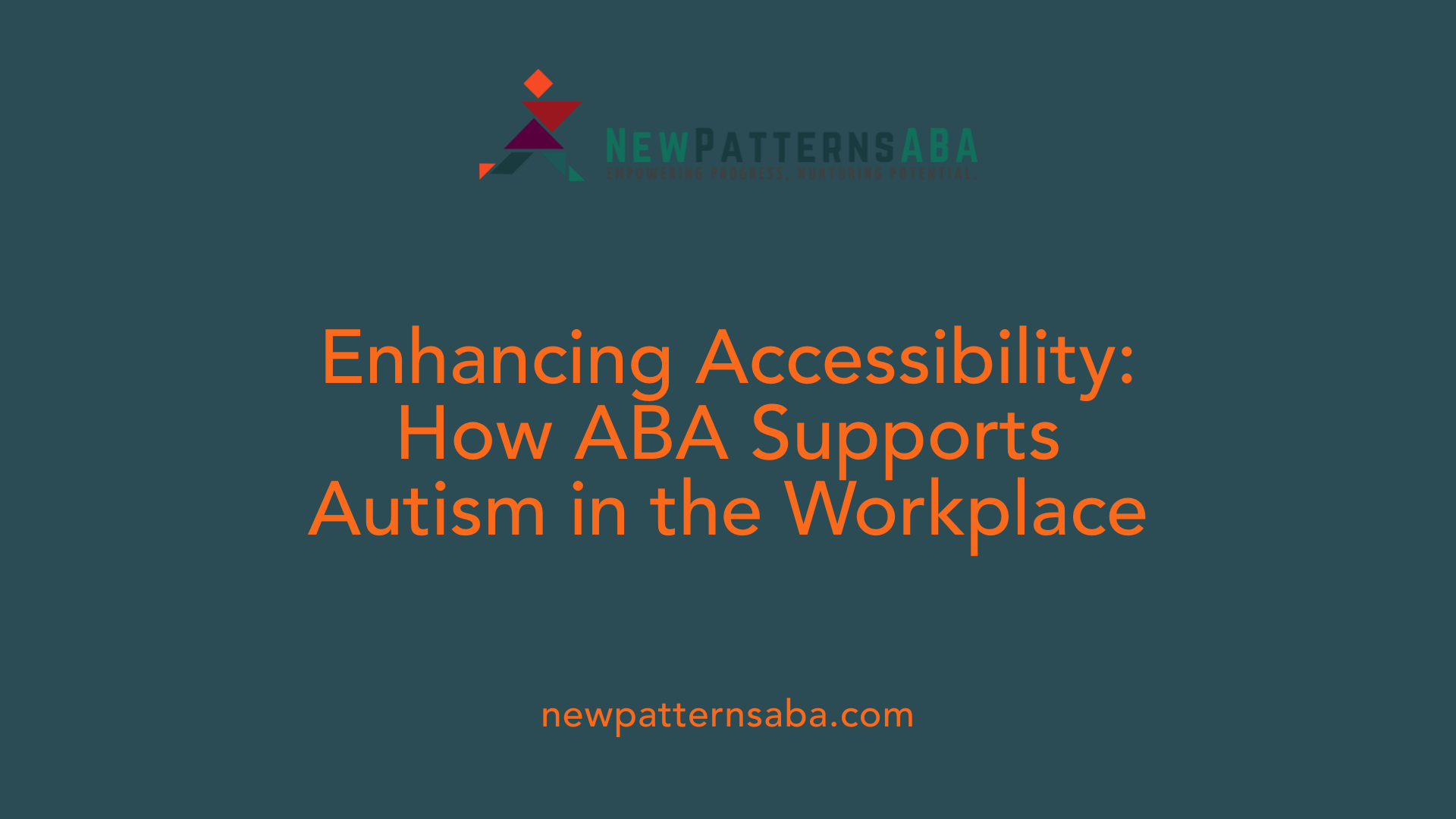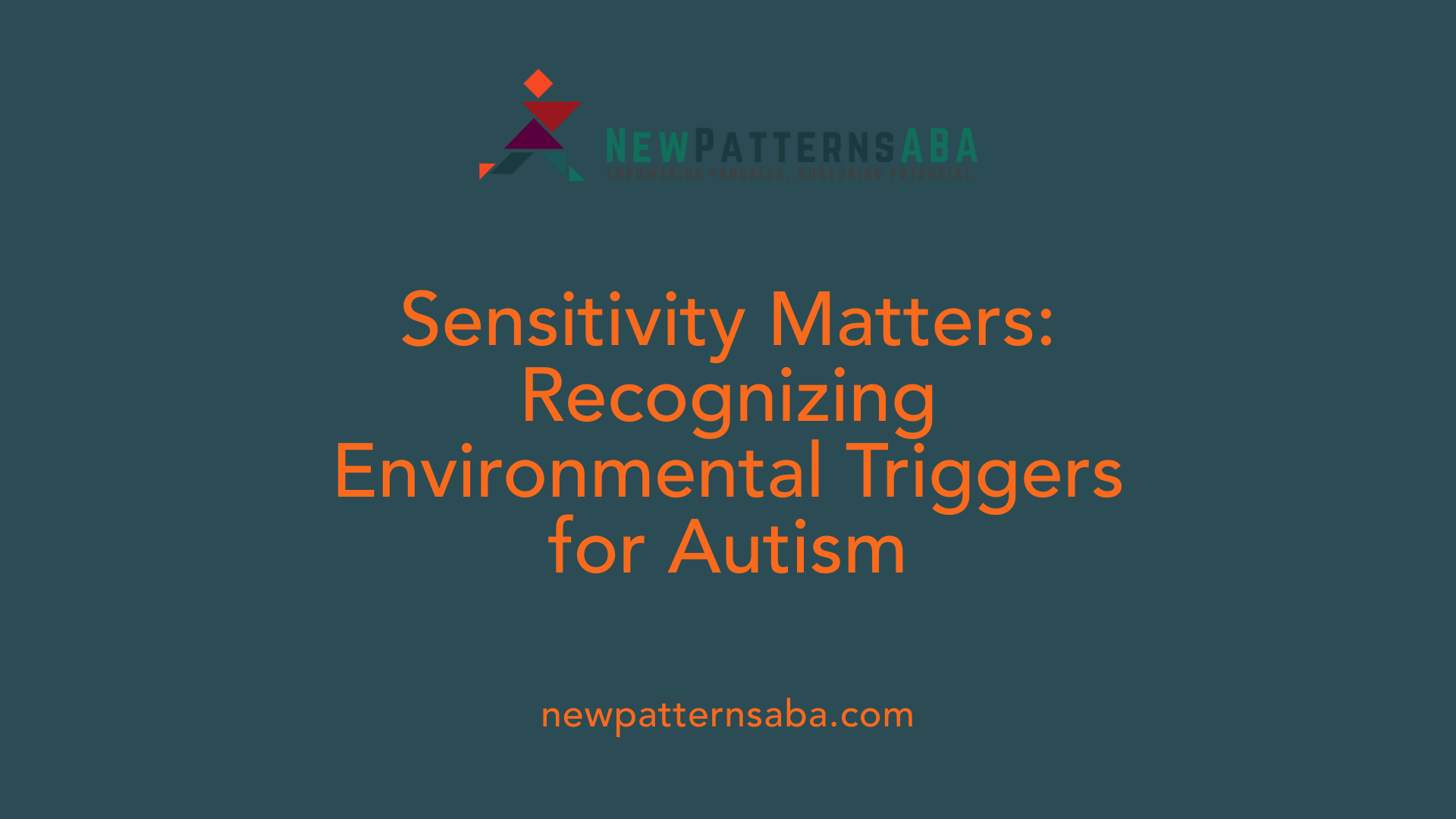Creating Supportive Work Environments for Neurodiverse Employees
Understanding the Intersection of Autism and Workspace Design
Designing office spaces that cater to the unique needs of individuals with autism is an evolving practice informed by extensive research and behavioral science. Autism spectrum disorder often entails sensory sensitivities, communication challenges, and distinct social interaction patterns, all of which directly impact how autistic individuals experience and navigate built environments. Integrating evidence-based approaches, including principles from Applied Behavior Analysis (ABA) therapy, into workspace design can significantly enhance well-being, productivity, and inclusion within professional settings.
The Role of ABA Therapy in Supporting Autism in the Workplace

What is Applied Behavior Analysis (ABA) therapy, and how is it used to support individuals with autism?
Applied Behavior Analysis (ABA) therapy is a scientifically supported method that applies learning and behavioral principles to help individuals with autism acquire new skills and reduce challenging behaviors. ABA focuses on understanding the relationship between environmental factors and behavior, using techniques such as positive reinforcement and the antecedent-behavior-consequence model to encourage desired behaviors.
Treatment plans with ABA are highly individualized and developed by licensed behavior analysts (BCBAs). These plans target important areas like communication, social skills, self-care, and academics, helping autistic individuals improve their ability to function independently and engage socially.
How ABA principles relate to environmental design
ABA emphasizes the influence of environmental triggers and supports on behavior. Creating a workplace environment that aligns with these principles can enhance the success of autistic employees. For instance, minimizing sensory overload, ensuring predictable routines, and providing clear visual or auditory cues are practical applications of ABA strategies.
This means designing offices with controlled lighting, reduced noise, and spaces that foster privacy and safe social interaction. Such environments reduce stress and help prevent behaviors typically triggered by overwhelming stimuli.
Individualized support strategies from ABA applicable in offices
ABA-based workplace supports include individualized assessments to identify sensory sensitivities or specific challenges an autistic employee faces. Adjustments may include flexible scheduling, quiet work areas, or personalized communication methods.
Using ABA, workplace modifications also focus on reinforcing positive work behaviors through structured feedback and incentives. Training coworkers and supervisors on ABA-informed interaction strategies promotes understanding and collaboration.
Together, these ABA-driven approaches create supportive, welcoming workplaces that respect neurodiversity and enhance productivity, wellbeing, and job satisfaction for autistic individuals.
Key Qualifications of ABA Therapy Providers and Their Role in Environmental Assessments

Who Provides ABA Therapy, and What Qualifications Do Professionals Offering This Therapy Typically Require?
ABA therapy is typically delivered by professionals such as Board Certified Behavior Analysts (BCBAs), behavior therapists, and sometimes educational psychologists. These practitioners usually possess specialized education in behavior analysis and hold certification from authoritative bodies like the Behavior Analyst Certification Board (BACB).
Beyond certification, providers often must meet licensing or state-specific requirements, especially in programs linked to public services such as Medi-Cal in California. Effective ABA therapy depends on detailed initial and ongoing assessments, tailored treatment plans, and consistent supervision to provide quality care.
The Importance of Assessments by Certified Specialists
Certified ABA specialists play a critical role in conducting environmental assessments that identify how an individual's sensory sensitivities and behaviors interact with their surroundings. These assessments help uncover triggers linked to the physical environment, such as sensory overload or safety risks.
By evaluating elements like lighting, noise, and room layout, ABA professionals can recommend modifications that support stability, safety, and independence for autistic individuals. Such assessments are foundational to developing person-centered plans that address specific challenges including behavior issues like elopement or self-injury.
Role of ABA Experts in Designing Autism-Friendly Environments
ABA providers contribute vital expertise in tailoring home and community environments to better suit autistic individuals’ needs. Their insights align with broader autism-friendly design principles aimed at minimizing sensory overload, enhancing privacy, and promoting control over social interactions.
For example, ABA specialists collaborate with designers and caregivers to implement modifications like sound-proof bedrooms, durable construction materials, and sensory-friendly room arrangements. This approach supports tenancy sustainability, reduces stress, and promotes health and dignity within living spaces.
| Provider Role | Qualifications | Contribution to Environment Modification |
|---|---|---|
| Board Certified Behavior Analyst (BCBA) | Certified by BACB, specialized education | Performs comprehensive behavioral and environmental assessments, develops intervention plans |
| Behavior Therapists | Training in behavior modification | Assist in applying individualized interventions and modifying environment to reduce triggers |
| Educational Psychologists | Advanced degree in education/psychology | Integrate behavioral insights with educational and environmental strategies |
Common ABA Goals and Techniques Informing Autism-Friendly Office Design

What are the common goals and techniques employed in ABA therapy for autism?
Applied Behavior Analysis (ABA) therapy focuses on developing essential skills and reducing behaviors that can interfere with a person's success, guided by individualized plans set by certified behavior analysts (BCBAs). Common goals include enhancing communication abilities, such as making requests and understanding instructions, as well as improving social skills like initiating greetings and responding appropriately to others.
ABA uses a variety of techniques including discrete trial training, which breaks down skills into small, teachable steps; natural environment teaching that encourages learning during everyday activities; and the use of prompts and fading to gradually build independence. Modeling behaviors and employing positive reinforcement to encourage desired actions are also central, all structured within the ABC framework that considers antecedents, behaviors, and consequences.
How do ABA techniques contribute to adapting workspaces for autistic individuals?
In workplace settings, ABA principles help create environments that support skill acquisition and reduce triggers for challenging behaviors. Techniques can be used to teach employees to navigate social interactions, follow routines, and use communication tools effectively. Additionally, behavior intervention plans may guide how to manage sensory sensitivities by adjusting the physical workspace, such as minimizing distractions or providing quiet areas.
How does ABA therapy promote independence and social interaction at work?
ABA strategies focus on building foundational skills that facilitate autonomous functioning and positive social engagement. For instance, teaching employees to request breaks, follow safety procedures, or engage appropriately with colleagues enhances their confidence and participation. Structured reinforcement encourages consistent use of these skills, promoting a supportive, inclusive office culture that values diversity and individual needs.
ABA's evidence-based framework aligns with autism-friendly office design by emphasizing tailored supports, predictable routines, and environments that accommodate sensory sensitivities. Together, they foster workplaces where autistic individuals can thrive and contribute meaningfully.
Environmental Sensitivities of Autistic Individuals in Office Settings

What sensory sensitivities are common in autism?
Autistic individuals often experience heightened sensory sensitivities, which can significantly affect how they perceive and interact with their surroundings in office environments. Common sensitivities include an increased awareness or discomfort to sounds, lighting, textures, and spatial arrangements. These sensitivities can lead to difficulties in communication and social interactions, as well as increased stress levels.
How do flickering lights, reflections, and echoing rooms affect autistic individuals?
Lighting systems that flicker, even when imperceptible to many, can cause distress, headaches, or increased anxiety for autistic persons. Similarly, surfaces that create strong reflections can be visually overwhelming and distracting. Echoing rooms amplify sounds in ways that can be disorienting or produce sensory overload. Together, these factors create an environment that can challenge concentration and well-being.
In what ways do environmental factors cause distress and health issues?
Environmental triggers such as flickering lights and acoustic irregularities contribute not only to discomfort but also to health concerns including migraines, increased stress responses, and sensory fatigue. Persistent exposure to such factors may exacerbate behavioral challenges and impact an individual's ability to function optimally in the workplace. Recognizing and adjusting these environmental elements is crucial for creating supportive, autism-friendly office settings.
Design Principles for Autism-Friendly Office Spaces

Safety, Stability, and Familiarity in Design
Creating a safe and stable environment is fundamental for autism-friendly office spaces. This involves using durable materials and thoughtful construction to prevent accidents and property damage. Familiar layouts and consistent, predictable design elements help reduce anxiety, making the workspace more navigable and comfortable for autistic individuals.
Minimizing Sensory Overload
Sensory sensitivities can significantly impact comfort and productivity. To minimize sensory overload, offices should avoid flickering or harsh lighting, limit reflective surfaces, and reduce echo through acoustical treatments. Incorporating sound-proof areas or rooms equipped with controlled lighting can provide essential refuge from overwhelming stimuli.
Providing Control Over Social Interaction and Privacy
Offering employees control over their social environment is vital. This can be achieved through flexible floor plans that create private workspaces and quiet zones, allowing individuals to regulate their interaction levels. Clear boundaries and options for retreat during high-stimulus periods promote a respectful and manageable social dynamic.
Supporting Independence and Dignity
Design strategies should promote self-sufficiency, incorporating features that enhance accessibility and ease of use. Elements such as intuitive layouts and supportive technologies empower individuals to work independently. Additionally, choices that respect personal preferences and privacy foster dignity, contributing to overall well-being.
These principles align with research-backed guidelines emphasizing robust, adaptable environments tailored to individual needs. By integrating safety, sensory considerations, control, and independence, autism-friendly office designs not only support employees but also cultivate inclusive and productive workplaces.
Specific Design Guidelines for Optimizing Office Environments
Floor Plans Allowing Personal Space and Social Control
Creating floor plans that offer clear personal territories is crucial for reducing social stress in autistic individuals. Spaces should be designed to allow easy control over social interactions, such as having options for private work areas and communal zones. This balance helps support both independence and the ability to engage socially when desired.
Acoustic Treatments and Sound-proofing
Acoustic modifications are vital to minimize distress caused by echoing or unexpected noises. Incorporating sound-proofing materials, such as acoustic panels and insulated walls, helps create quieter, more calming environments. Dedicated quiet zones or sensory rooms can further provide refuge from overstimulation.
Lighting Adjustments to Eliminate Flicker and Harsh Reflections
Flickering lights and harsh reflections can cause significant discomfort. Installing stable, non-flickering lighting options, such as LED lights with diffusers, reduces these triggers. Using indirect lighting and ensuring windows have adjustable shading controls can also help manage natural light levels effectively.
Use of Durable, Non-toxic Materials
Employing durable and non-toxic materials in office construction and furnishings supports health and safety. Materials that minimize off-gassing reduce the risk of adverse reactions. Additionally, robust finishes help maintain the environment’s integrity, decreasing repair needs and disruptions.
Incorporating Sensory Rooms or Quiet Zones
Designated sensory rooms or quiet zones offer a controlled environment where individuals can retreat to reduce sensory overload. These spaces typically feature calming colors, soft furnishings, and controlled sensory input, helping users regulate emotions and stress levels.
| Design Aspect | Implementation Example | Benefit |
|---|---|---|
| Floor Plans | Private workstations and communal areas | Balances independence with social interaction control |
| Acoustic Treatments | Sound-proofing walls and quiet zones | Minimizes noise-induced stress and sensory overload |
| Lighting | Non-flickering LED lights, diffusers | Reduces visual triggers like flicker and glare |
| Materials | Durable, non-toxic finishes | Enhances health safety and reduces maintenance disruptions |
| Sensory Rooms/Quiet Zones | Calming color schemes, soft furnishings | Provides a refuge to regain sensory balance and reduce anxiety |
Integrating Person-Centered Planning and Social Support into Office Design
Customized Environmental Assessments
Person-centered planning begins with tailored environmental assessments to understand the unique sensory sensitivities and behavioral needs of autistic individuals in the workplace. These assessments identify specific triggers such as flickering lights or echoing rooms and inform modifications that create a calming and supportive environment.
Addressing Individual Behavioral Challenges
Design solutions consider challenges like elopement, self-injury, or seizures, integrating safety features such as secure access points and durable, unbreakable materials. This personalized approach helps to reduce stress and maintain a safe, productive office space.
Facilitating Communication and Clear Expectations in Office Culture
Clear communication forms the foundation of a supportive workplace. Explaining office policies, lease agreements, and daily routines in straightforward language helps autistic employees understand expectations and reduces anxiety.
Conflict Management and Fostering Community
Conflict management strategies are essential to sustaining a positive office culture. Structured processes and open dialogue encourage resolution while fostering a sense of community, promoting inclusion and dignity for all employees.
Building Inclusive Workspaces for Neurodiversity
Creating autism-friendly office spaces represents a vital step toward inclusive and supportive workplaces. By understanding the sensory and social needs of autistic individuals, applying principles from evidence-based therapies like ABA, and employing targeted design strategies, offices can foster environments that reduce stress, increase comfort, and empower independence. Integrating comprehensive environmental modifications along with social supports ensures that employees on the autism spectrum can thrive professionally and socially. This holistic approach not only benefits individuals with autism but enriches workplace diversity and productivity overall.






